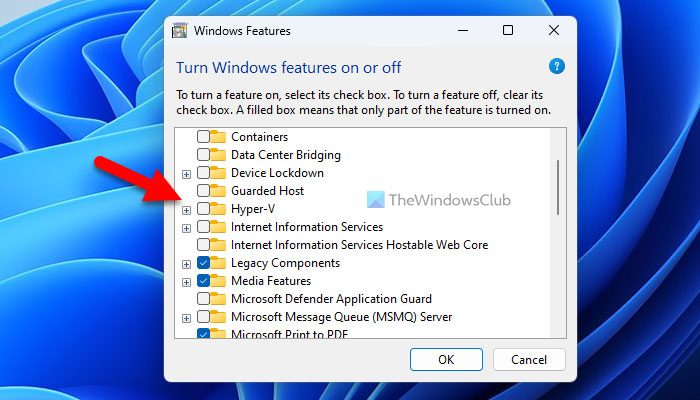If VMware is causing a Blue Screen error on Windows 11/10, the following tips could be handy for you. There are different reasons why your host computer fails to load the VMware virtual machine. This article explains some of the most common causes and solutions to mitigate this issue within moments.

VMware causes Blue Screen on Windows 11/10
If VMware causes a Blue Screen on Windows 11/10, follow these steps:
- Update VMware
- Low computer resource
- Turn off Hyper-V
- Disable other virtual machines
- Corrupt ISO file
To know more about these steps, continue reading.
1] Update VMware
It is probably the very first thing you need to check. There could be times when VMware might fail to make your virtual machine up and running due to a glitch or bug. If you have recently updated your VMware app, it might come with a bug that could cause the aforementioned issue.
In most cases, companies recognize the bug and roll out an update almost immediately. If the same thing happens with your VMware installation, chances are they have already released an update. That is why it is recommended to check the official statement and install the update if anything has been released.
2] Low computer resource
Although the official statement says something about the 1.3GHz processor and 2GB of RAM, you might not be able to run a virtual machine smoothly or at all, having such resources. It is always recommended to configure much better hardware than the mentioned one.
If you have an old x64 architecture, you might not be able to run VMware virtual machines. In other words, there is a high chance of getting the blue screen error on the host computer while running the virtual OS. That is why it is recommended to have a better hardware configuration to bypass the BSOD
Pro tip: You can open Task Manager alongside VMware to check which app is consuming more RAM and other resources. Then, you can close such unnecessary apps to assign more CPU resources to VMware.
3] Turn off Hyper-V

Hyper-V is a Level 1 hypervisor that makes the host computer into a virtual PC. On the other hand, VMware is a Level 2 hypervisor that uses the host computer to build the virtual machine. That is why if you enabled Hyper-V earlier, you might not be able to use VMware or VirtualBox-like virtual machine apps simultaneously. You must disable either of them. In other words, if you want to use VMware, you need to disable Hyper-V.
To disable Hyper-V in Windows 11/10, do the following:
- Click on the Taskbar search box.
- Search for windows features.
- Click on the individual search result.
- Remove the tick from the Hyper-V checkbox.
- Click the OK button.
- Let it finish all the processes.
- Restart your computer.
Once done, you will be able to use VMware without any BSOD.
4] Disable other virtual machines
Many people often use multiple virtual machine apps, such as VirtualBox, VMware, etc., simultaneously. In most situations, such workflow might cause a blue screen error on your computer. That is why it is recommended to disable other virtual machine software. For that purpose, you can take the help of the Task Manager to terminate all the dependencies.
5] Download ISO file again
If VMware causes a blue screen while installing the virtual machine OS, it is suggested to download the ISO file again. If the ISO comes with some corrupt files, there is a chance of getting BSOD while using that ISO in the virtual machine. You can follow this guide to download Windows 11/10 ISO directly.
Read: How to fix VMware Internal Error while powering on
Can VMware cause BSOD?
Yes, VMware can cause BSOD on Windows 11/10 PC. As said earlier, there could be countless reasons why you might get a blue screen error due to having VMware on your computer. For your information, some common reasons are mentioned in this article, and it is recommended to follow them to get rid of this issue.
Is VMware compatible with Windows 11?
Yes, VMware is compatible with Windows 11. If you have successfully installed Windows 11 without compromising the official system requirements, you can easily install VMware on your computer. As per the official statement, VMware requires a minimum of 2GB RAM along with 1.3GHz clock speed. On the other hand, it runs on almost all the x64 architecture without any problem.
Read: VMware does not support the user level monitor of this host.
Leave a Reply